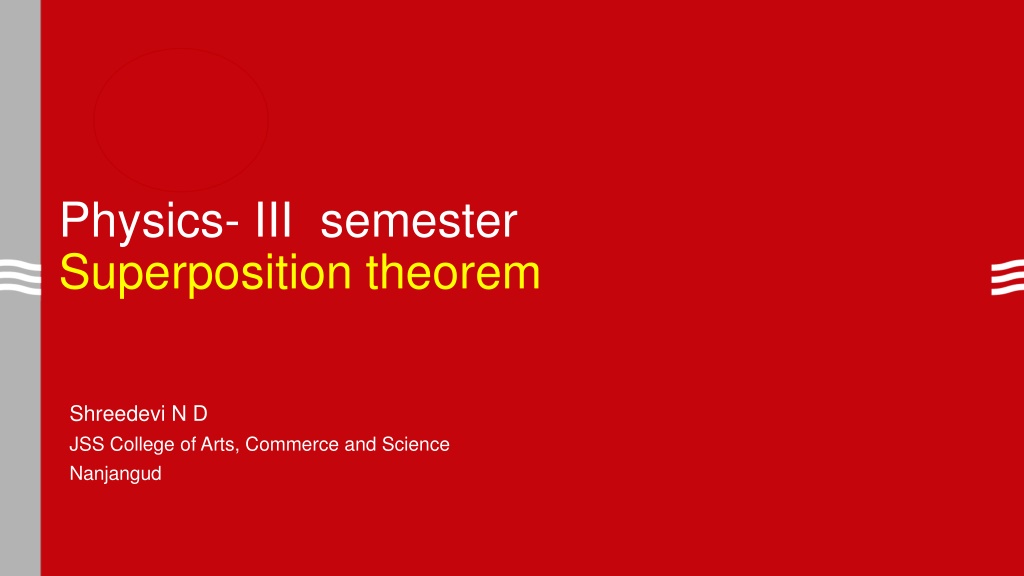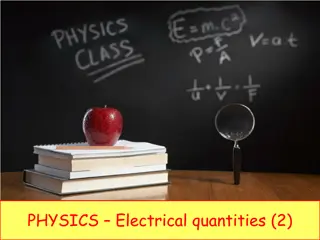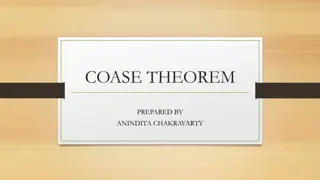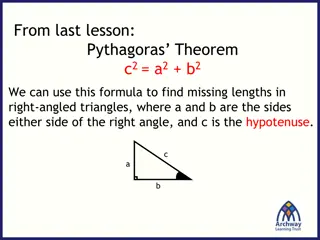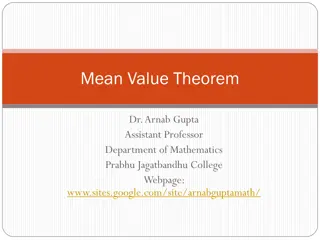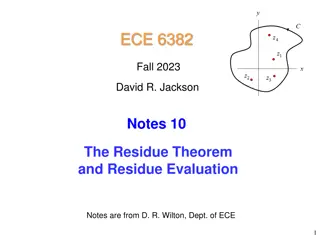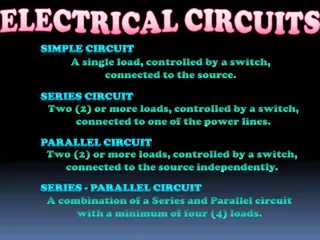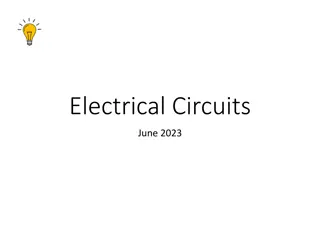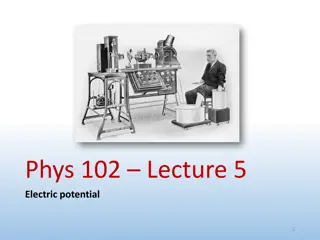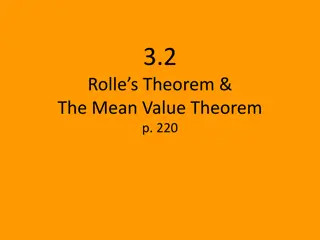Understanding Superposition Theorem in Electrical Circuits
Superposition theorem in electrical circuits states that the effects of multiple voltage and current sources in a network can be analyzed independently and then combined algebraically. This allows for calculating the voltage and current distribution in a network more efficiently. The theorem involves steps such as isolating each source, calculating individual effects, and finally summing up the results. An example problem illustrates how to apply the superposition theorem to find the voltage across a resistor in a circuit.
Download Presentation

Please find below an Image/Link to download the presentation.
The content on the website is provided AS IS for your information and personal use only. It may not be sold, licensed, or shared on other websites without obtaining consent from the author. Download presentation by click this link. If you encounter any issues during the download, it is possible that the publisher has removed the file from their server.
E N D
Presentation Transcript
Physics- III semester Superposition theorem Shreedevi N D JSS College of Arts, Commerce and Science Nanjangud
Superposition theorem Statement: According to this theorem, if there are number of voltage and current sources acting simultaneously in a network then each source can be treated as if it acts independently of the others. Hence we can calculate effect of one source at a time then superimpose i.e. algebraically add the effects of all the sources. Step 1: First all the sources except one under consideration are removed. While removing these voltage sources their internal resistance are left behind, while removing the current sources, as their internal resistance is infinite they are replaced by an open circuit. Step 2: Next current in the various branches and voltage across various branches due to single source is calculated. Step 3: The process is repeated for other sources taken one at a time. Step 4: Finally algebraic sum of currents and voltage drop across the resistors due to different sources is calculated.
Explanation Step 1 : When V1 is operated and V2 is short circuited Let I1 is the total current through the network when V1 is operated alone. I1 and I2 are the loop currents in the loops 1 and 2 respectively as shown in the figure. Then I1= I1 + I2 Apply KVL for loop 1: I1 R1+ (I1 + I2 )R3 = V1 Or I1 (R1+ R3) + I2 R3 = V1 ..(1) Apply KVL for loop 2: I2 R2+ (I1 + I2 )R3 = 0 Or I1 R3 + I2 (R2 +R3) = 0 ..(2) Solving simultaneous equations 1 & 2, I1 and I2 can be calculated and hence I1 =I1 + I2 can be calculated.
Explanation- contd. Step 2: When V2 is operated and V1 is short circuited Let I2 is the total current through the network when V2 is operated alone. I1 and I2 are the loop currents in the loops 1 and 2 respectively as shown in the figure. Then I2= I1 + I2 Apply KVL for loop 1: I1 R1+ (I1 + I2 )R3 = 0 Or I1 (R1+ R3) + I2 R3 = 0 ..(3) Apply KVL for loop 2: I2 R2+ (I1 + I2 )R3 = V2 Or I1 R3 + I2 (R2 +R3) = V2 ..(4) Solving simultaneous equations 3 & 4 I1 and I2 can be calculated and hence I2 =I1 + I2 can be calculated Finally algebraic sum of currents I1 and I2 due to sources V1 and V2 is calculated
Problem-1 Using superposition theorem find the voltage across 10? ? resistor Step 1 :, we keep only voltage source active and the current source is removed and replaced by open branch. So the circuit will become as shown in the figure. ?? 15 =?? current through R2 is I1 = ?? A = 15+10 ?1+ ?2
Problem-1 Step 2 :, we keep only current source active and the voltage source is removed and replaced by a short. So the circuit will become as shown in the below figure. ??1 1 15 15+10=15 Current through R2 is I2 = ?1+ ?2= 25A According to superposition theorem the total current through load R2 is the algebraic sum of I1 & I2 I= I1 + I2=15 25+15 25=30 25 A Hence voltage across 10? is = I R2 =30 25 ? 10 = 12?
Problem-2 Using superposition theorem find the voltage across 2? ? resistor Step 1: only the 28-volt battery is active and 7 volt battery is replaced by a short Current through R2=I1= I x R3 ?3+?2 2 1 2+1= 4 +2 3=14 ??= 4 + 2 1 = 4 + 3? I =?? 28 14 3 ??= = 6? Current through R2 = I1= I x R3 ?3+?2 = 6 1 1+2= 2?
Problem-2 Step 2: only the7-volt battery is active and 28 volt battery is replaced by a short Current through R2 = I2= I x R1 ??= 1 + 4 2 = 1 +4 2 ?1+?2 4 + 2= 1 +8 7 3 6= I=?? 7 7 3 ??= = 3? Current through R2= I x R1 ?1+?2 = 3 4 4+2= 2? Hence the total current through R2 is 2+2=4A and Voltage drop across R2 = current through R2 R2 = 4 2 = 8V
